What are the most common puppy training methods? Looking for a healthy puppy is the first step toward a happy future together. Training is crucial in helping your puppy grow up well-behaved and confident.
Here, we explore pet owners and trainers’ nine most common training methods. It’s worth noting that each method has pros and cons and can be reformed depending on your puppy and what you are training for.
9 Most Common Puppy Training Methods
Here are nine standard training methods:
1. Positive Reinforcement Training

Positive reinforcement is one of the most accepted and employed approaches in dog training. In this approach, the puppy is praised or rewarded for exhibiting positive behavior so that the puppy performs that behavior more often.
How It Works
- Rewarding: Treats, toys, or even praise are given to the puppy whenever commands are followed or desirable behavior is exhibited.
- Immediate response: Reward your puppy right after the behavior so he/she knows which behavior was correct.
- Repetition: The same type of rewards and commands should be given every time so the puppy can quickly learn.
Benefits
This confidence fortifies and lessens the burden of training as it makes sense to the puppy that there is happiness in learning.
2. Clicker Training
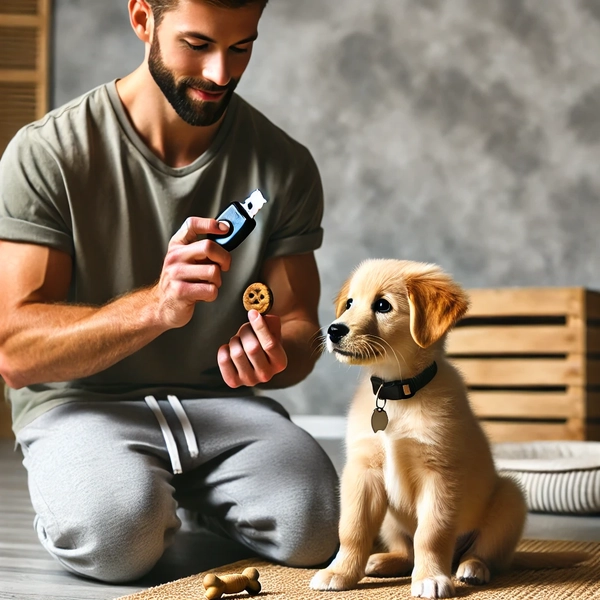
Like every other training technique, clicker training is based on a positive reinforcement scheme. The trainer uses a clicker—a handheld device capable of making a snapping sound—that snaps the moment the puppy successfully performs the desired action.
How It Works
- Click and Treat: The trainer clicks the clicker to indicate a well-done behavior to the puppy just before offering the puppy a treat. The sound lets them know what they did properly.
- Training purposes for clickers: First, before any training period begins, click and treat a certain number of times so the pup associates the click with a treat coming.
- Couple it with Command: Clicker training should also be done when a command such as “sit” or “stay” is given to strengthen such behavior.
Advantages
- Precise Timing: The clicker indicates to the pup the exact moment he has done a particular task correctly, even quicker than the words.
- Builds Focus: The sound also helps focus the pup’s attention on the other training activities.
3. Crate Training Techniques
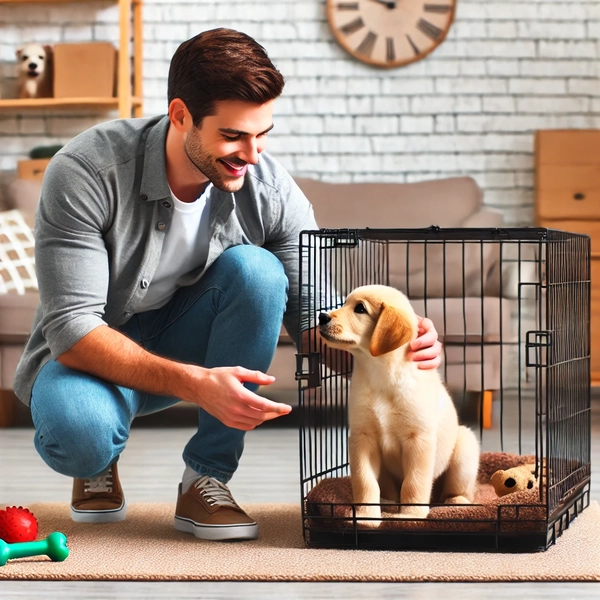
Crate training teaches puppies self-limitation and creates an area of comfort for them. It also helps keep them clean and trains them where it is appropriate for them to rest.
The Process of Crate Training Steps
- Choose the Right Crate: Ensure that the crate is versatile, easy to use, and not restrictive for the pup.
- Introduce the Crate Slowly: Fill the crate with toys and food to turn the device into a pleasant structure for the dog.
- Increase Alone Duration: Start with minutes only to the puppy and increase the time range.
Positive Aspects of Using a Crate for Training
- Safety: A space for a particular puppy is associated with comfort and safety.
- Portability Training: Training puppies is more efficient because they are less likely to mess up their space.
Tips for Success
- Do not ever regard a crate as a disciplinary tool.
- Avoid placing the crate in high-traffic areas; it is best kept somewhere where the puppy can rest.
4. Leash Training
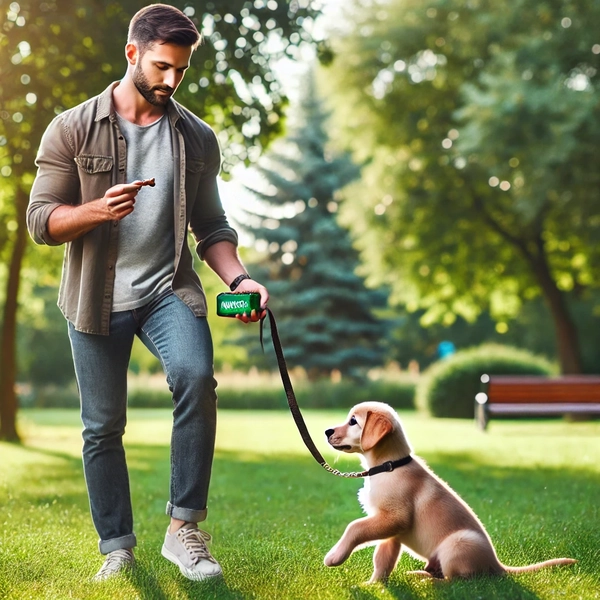
With leash training, your puppy will learn to walk beside you without causing any commotion. This is especially important when going outside on walks.
Steps for Leash Training
- Leash indoors: Indoors refers to an area where the puppy has already walked and played. This is done to eliminate distractions.
- Carry Some Treats: If the dog refuses to follow, a piece of treat can coax him along.
- Short Distances and Move On To Longer Ones: Once the puppy gets accustomed to the leash, the distance can gradually extend.
Frame Problem-Solution
Since every new skill requires practice, leash training can be tiresome. Puppies will try to pull or resist initially, but it’s all part of learning to be well-behaved when walking on a leash.
5. Socialization Training
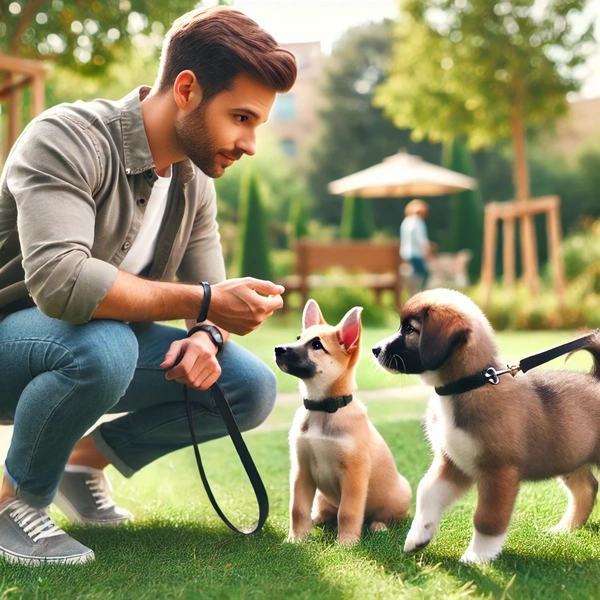
Socialization training means exposing the puppy to different situations and people as they grow. This includes, among other things, new people, animals, and places.
What Strategies Can You Use in Socializing Your Puppy?
- Let Them Interact With New People: Bring around both adults and children to let them meet new faces.
- Go Different Places: To help your puppy adapt to a new environment, visit puppy-friendly public locations such as a park or a pet shop.
- Allow Your Puppy To Play With Other Puppies: Invite gentle playmates for your puppy. This is a good way for your puppy to learn socialization techniques.
The Importance of This Training
An adequately socialized puppy is less likely to develop fear or aggressiveness. It thus grows knowing that change is part of life and does not traumatize it.
Socialization Principles
- Do not take your puppy to social activities that involve many people until they are vaccinated.
- Pay attention to your puppy’s feelings if they appear fearful, back off and provide comfort.
6. Training for Obedience
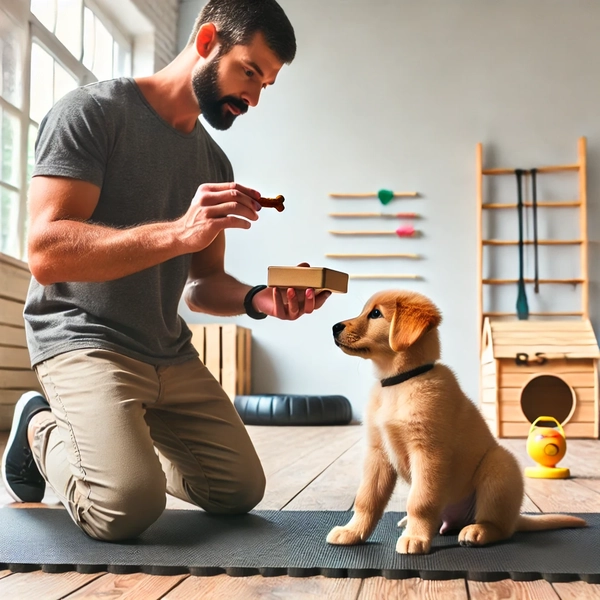
Obedience training is the first step in teaching your new pet basic commands such as sit, stay, and come.
It also teaches them how to respond to their master’s commands, which is crucial in discipline and safety.
Basic commands
Sit: This is the first command you should teach, as it is the easiest. Hold the treat up and extend it towards the dog’s rear so that it sits naturally.
- Stay: After the dog has mastered the art of sitting, step backwards and say out loud, “Stay.” Praise and rewards should be given when the dog does not move from that spot.
- Come: This word is helpful when gathering your little canine from a distance. Reward the pet if it runs to you.
Training Tips
- The training sessions should be as brief as possible, within the recommended range of 5-10, in order to focus your puppy’s attention.
- When giving commands, use a calm but assertive voice.
- Consistency is very vital. Engage in Practice daily to reinforce practices.
7. Housebreaking or Potty Training
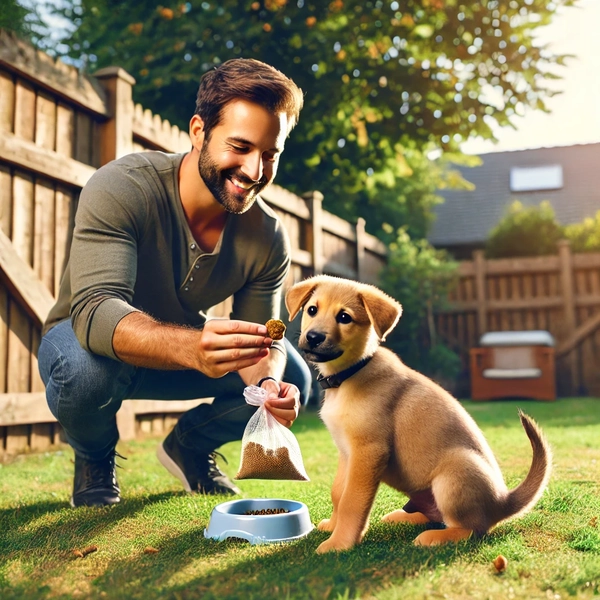
Housebreaking is an important milestone in house-training a puppy. The puppy must also understand that there is a place to go and a place not to go.
Steps on How to Housebreak Your Puppy
- Set a Routine: Regularly take your puppy out for a walk at similar times, such as after meals or naps.
- Praise and Reward: After finishing their potty business outside, they must be appreciated. Give them a treat so they know they did well.
- Supervise Inside: Monitor your puppy when they are inside the house. If both of you are indoors and the puppy looks like it wants to go out, take it out immediately.
Potty Training Schedule Sample
| Time | Activity |
| Morning | Take the puppy outside |
| After Meals | Potty time |
| Before Bedtime | Last potty trip |
Common Mistakes to Avoid
- Punishing Mistakes: Puppies do not comprehend punishment; it only hardens them and instills fear.
- Being Inconsistent: Follow a daily schedule so the dog knows what is expected.
8. Command-Based Training
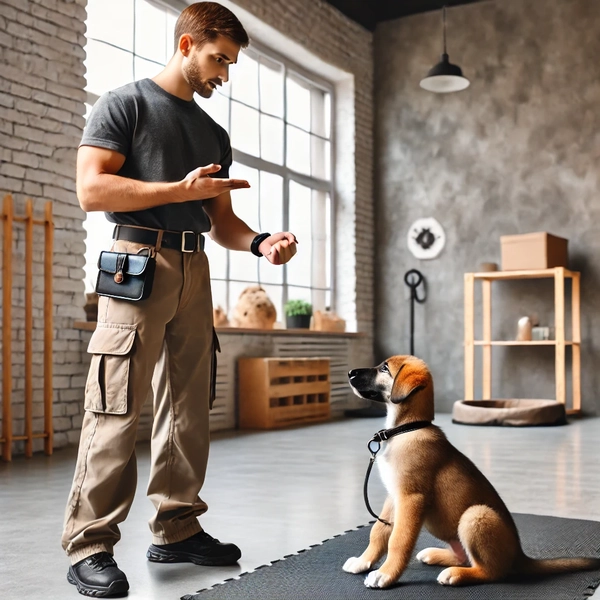
It is command-based training, which means teaching the puppies to react to certain words or sounds. It is also quite effective in instilling discipline and etiquette.
Steps for Command-Based Training
- Start With Basics: start with simple commands such as ‘sit,’ ‘stay,’ or ‘down.’
- Pair Commands with Rewards: If someone follows a command, give them a reward for that immediately.
- Practice Regularly: Regular training is essential for puppies to command the commands.
Why It Works
Commands allow your puppy to have clear instructions. This provides an organized approach to controlling behavior and helps them learn precisely what you want them to do.
9. Relationship-Based Training
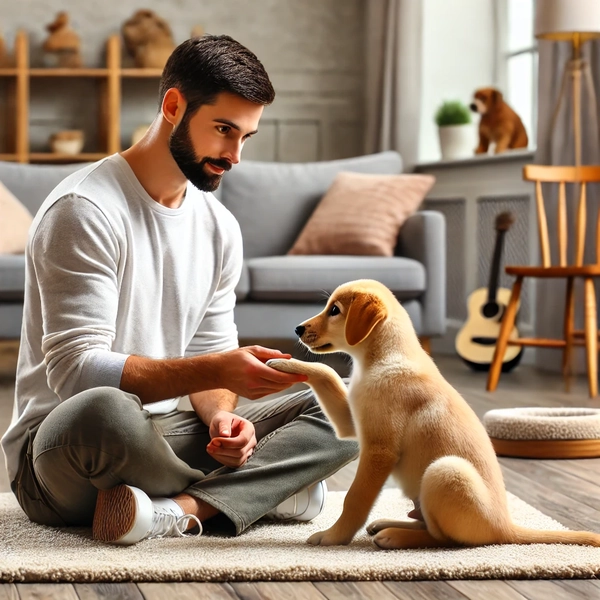
Another suitable method for training puppies is Relationship-Based Training. This method emphasizes training the dog and the owner to develop a bond.
The dog believes it is easier to follow instructions from someone with whom it has a bond.
It is a method in which positive reinforcement, body language, and an understanding of a dog’s characteristics are combined to create a complete training process.
How Relationship-Based Training Works
- Communication: You learn to read your puppy’s signals and know how to act or respond to him accordingly.
- Positive Interactions: Rewarding good behavior and giving commands so that the puppy does not feel threatened but rather encouraged to be happy.
- Individualized Approach: This approach is different from others, which tend to be standardized. In this one, the training is tactically based on the puppy’s character and likes.
Benefits
Strengthens the Bond: This approach is beneficial as it is based on working together and trust. As such, it helps to enhance the bond between the dog and the owner, which enhances the dog’s willingness to be trained.
Adapts to the Puppy’s Needs: It’s dynamic and permits one to change the approach depending on the puppy’s behavior, facilitating effective problem correction.
Final Thoughts
Puppy training can be time-consuming and strenuous, but it can pay off in the long term! You can train your dog using positive reinforcement, clicker training, crate training, and socializing, which will help strengthen your relationship with the puppy and aid in raising a well-disciplined dog.
Most importantly, stick to the schedule, provide lots of praise and make the training sessions enjoyable for you and your canine buddy. Enjoy the training!